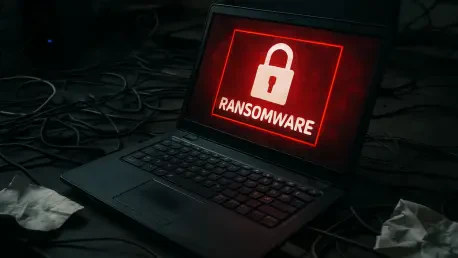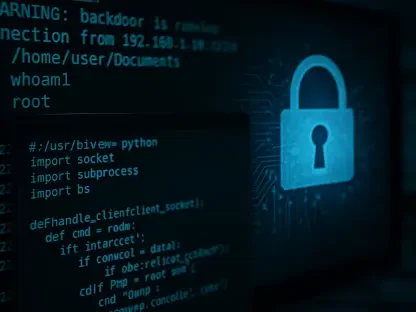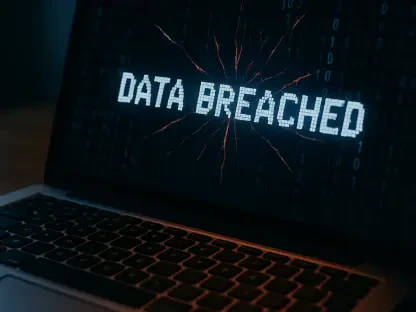In the constantly shifting arena of cybersecurity threats, ransomware continues to stand out as a particularly insidious challenge, and the latest iteration of Chaos ransomware has elevated this danger to unprecedented levels with a dramatic overhaul. This notorious malware has transitioned into a highly advanced C++ variant, moving away from its earlier .NET framework foundation. This transformation is far more than a simple update; it represents a fundamental shift in how ransomware operates, merging rapid execution with devastating new tactics that extend beyond traditional extortion methods. By incorporating sophisticated encryption techniques, outright data destruction, and even cryptocurrency theft, Chaos has redefined the scale of damage it can inflict. Victims are left with dwindling options for recovery, while cybersecurity professionals are compelled to reassess and strengthen their defensive strategies against this evolving menace. This alarming development signals a critical moment for digital security, demanding urgent attention to counter a threat that is as innovative as it is destructive.
Unleashing a New Era of Technical Mastery
The leap to a C++ framework has propelled Chaos ransomware into a league of its own, showcasing a level of technical prowess that sets it apart from its predecessors. This variant capitalizes on C++ to achieve superior performance and stealth, making it significantly harder for detection tools to identify and neutralize it before damage is done. A particularly striking feature is its tiered encryption model, which targets files based on their size for maximum impact. Files smaller than 50MB are encrypted using the robust AES-256-CFB method through Windows CryptoAPI, while those between 50MB and 1.3GB are bypassed, and files exceeding 1.3GB are deleted entirely. This ruthless strategy ensures that critical data, such as large databases or essential backups, becomes irretrievable, amplifying the havoc wreaked on victims. Additionally, Chaos employs an XOR-based fallback encryption for environments where standard cryptographic functions are limited, demonstrating an adaptability that allows it to operate across diverse systems with chilling efficiency.
Beyond its encryption tactics, Chaos ransomware reveals a calculated design aimed at evading even the most sophisticated cybersecurity measures. The shift to C++ not only enhances its speed but also equips it with mechanisms to dodge automated analysis tools that many organizations rely on for early threat detection. By carefully manipulating how it interacts with system processes, Chaos can disguise its malicious activities, often mimicking legitimate operations to avoid raising red flags. The selective destruction of larger files is a deliberate choice, targeting assets that are typically vital to business continuity or personal data preservation. This approach balances operational efficiency with catastrophic outcomes, ensuring that the impact is both immediate and severe. As a result, the technical advancements in this variant underscore a troubling reality: cybercriminals are continuously refining their tools to outpace defensive technologies, creating an urgent need for innovative countermeasures that can keep up with such rapid evolution in malware sophistication.
A Shift to Destruction Over Ransom Demands
One of the most disturbing aspects of the Chaos C++ variant is its departure from the conventional ransomware model of holding data hostage for payment. Unlike older strains that offered decryption keys as an incentive for victims to comply with demands, this version prioritizes outright destruction, leaving little room for negotiation or recovery. Files exceeding 1.3GB are not encrypted but permanently deleted, ensuring that critical assets—often the backbone of organizational operations—are lost forever, regardless of whether a ransom is paid. This destructive focus extends to sabotaging built-in recovery mechanisms, as Chaos seeks administrative privileges to disable essential system tools. By targeting services like Volume Shadow Copy and Windows backup catalogs, it systematically eliminates any chance of restoring data without external assistance, marking a chilling evolution toward malware that seeks to inflict lasting damage rather than merely extract payment.
This aggressive strategy signals a broader trend in the ransomware landscape, where the emphasis is shifting from financial coercion to inflicting irreparable harm as a primary objective. The deliberate erasure of large files suggests an intent to cripple operations on a fundamental level, particularly for businesses that rely on extensive datasets or archival records. Moreover, the calculated dismantling of recovery options means that even seasoned IT teams face significant hurdles in mitigating the aftermath of an attack. The psychological impact on victims cannot be understated; the realization that compliance with demands offers no guarantee of data retrieval adds a layer of despair to an already dire situation. As Chaos redefines the ransomware playbook with such tactics, it becomes evident that traditional incident response frameworks are insufficient. Cybersecurity strategies must evolve to address this paradigm of destruction, focusing on prevention and resilience to withstand attacks designed not for profit alone, but for maximum disruption.
Cryptocurrency Theft as an Added Threat
Beyond the immediate devastation of data loss, Chaos ransomware introduces a secondary, yet equally damaging, vector of attack through cryptocurrency theft. This variant is equipped with a clipboard hijacking capability that actively monitors for Bitcoin wallet addresses in multiple formats, such as P2PKH, P2SH, and Bec###2. Upon detecting a potential address, it stealthily replaces it with one controlled by the attackers, redirecting transactions without the victim’s knowledge. This silent interception can affect both personal and business dealings, siphoning funds long after the initial ransomware incident has passed. Such a mechanism transforms Chaos into a persistent financial threat, extending its impact far beyond the encryption phase and ensuring that attackers reap rewards through multiple channels, combining traditional ransom demands with ongoing theft.
The implications of this cryptocurrency hijacking feature are profound, particularly for industries and individuals heavily engaged in digital transactions. Since the replacement operates in the background with minimal validation, even strings resembling wallet addresses can trigger unintended diversions, affecting legitimate operations without any overt signs of interference. This dual-threat model not only maximizes revenue for cybercriminals but also complicates the recovery process for victims, who may remain unaware of the ongoing financial bleed until significant losses accumulate. The integration of such a tactic into ransomware highlights the growing intersection between cybercrime and digital finance, exposing vulnerabilities in how cryptocurrency transactions are handled. As Chaos exploits this niche, it becomes imperative for organizations to implement stricter monitoring of clipboard activities and enhance transaction verification processes to safeguard against losses that persist well after the primary attack has been contained.
Mastering Stealth and Persistence
Chaos ransomware excels not only in its destructive capabilities but also in its ability to infiltrate systems undetected through highly refined deployment strategies. Initially posing as a legitimate application, such as “System Optimizer v2.1,” it leverages social engineering to trick users into executing its malicious payload. Once inside, it employs sophisticated evasion techniques, including mimicking trusted system processes like svchost.exe by altering console window titles to blend seamlessly with normal operations. Strategic delays are also utilized to bypass automated sandbox environments often used for threat analysis, ensuring that the malware remains undetected during critical early stages. These stealthy tactics allow Chaos to establish a foothold within compromised systems, setting the stage for widespread damage before defensive measures can be deployed.
Persistence is another hallmark of this variant, as it ensures long-term impact through carefully designed mechanisms. After completing its encryption and destruction routines, Chaos creates mutexes to maintain its presence on infected systems, preventing easy removal by standard cleanup tools. It then transitions into a surveillance mode, continuously monitoring clipboard activity to sustain its cryptocurrency theft operations. This ability to linger undetected extends the threat lifespan significantly, turning a single infection into a prolonged campaign of exploitation. The combination of deceptive entry methods and enduring presence poses a formidable challenge for cybersecurity teams, who must now contend with threats that are not only hard to spot but also difficult to eradicate. Addressing this level of stealth requires advanced detection tools and a proactive approach to user education, ensuring that potential entry points are secured against such cunning social engineering ploys.
Navigating the Future of Cybersecurity Defenses
The emergence of the Chaos C++ variant serves as a stark reminder of the escalating complexity within the ransomware domain, demanding a fundamental rethinking of cybersecurity approaches. Its multifaceted attack strategy—combining rapid encryption, deliberate data destruction, and sustained cryptocurrency theft—renders traditional response timelines obsolete. The ongoing threat of clipboard hijacking, for instance, means that even after mitigating the initial encryption event, organizations remain vulnerable to financial exploitation. This necessitates a shift toward continuous monitoring and real-time threat detection to identify and neutralize persistent risks that linger beyond the primary attack. As Chaos exemplifies the trend of ransomware evolving into more destructive and diversified threats, static defenses are no longer sufficient to protect against such dynamic adversaries.
Looking ahead, the cybersecurity community must prioritize adaptive strategies that address both immediate and long-term implications of sophisticated ransomware like Chaos. This involves investing in advanced endpoint protection capable of recognizing behavioral anomalies indicative of stealthy malware activity, as well as enhancing system resilience to minimize the impact of destructive tactics. Collaboration across industries to share threat intelligence, such as the Indicators of Compromise (IoCs) associated with Chaos, can also bolster collective defenses against emerging variants. Furthermore, safeguarding digital finance operations requires heightened scrutiny of transaction processes to prevent losses from clipboard-based theft. By embracing a holistic approach that integrates prevention, detection, and sustained vigilance, organizations can better position themselves to counter the relentless innovation of cyberthreats, ensuring that the devastating potential of tools like Chaos is kept in check through proactive and informed action.









